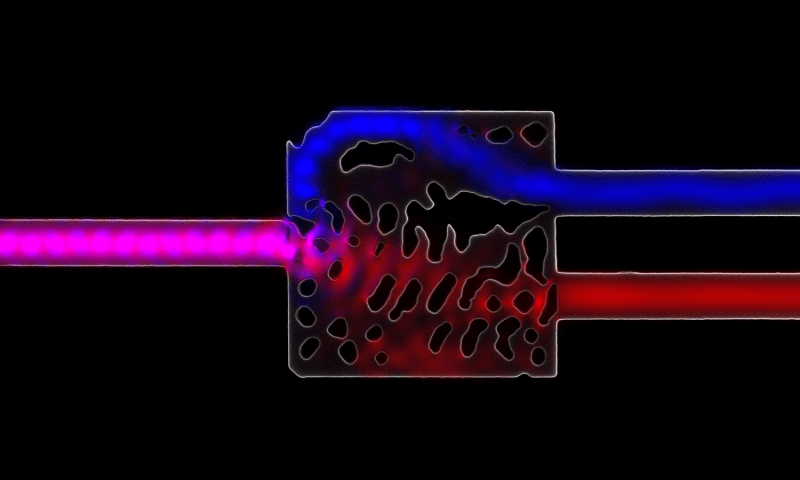
- The Stanford work relies on the well-known fact that infrared light will pass through silicon the way sunlight shines through glass. And just as a prism bends visible light to reveal the rainbow, different silicon structures can bend infrared light in useful ways.
- The Stanford algorithm designs silicon structures so slender that more than 20 of them could sit side-by-side inside the diameter of a human hair. These silicon interconnects can direct a specific frequency of infrared light to a specific location to replace a wire. By loading data onto these frequencies, the Stanford algorithm can create switches or conduits or whatever else is required for the task.
- The inverse design algorithm is what makes optical interconnects practical by describing how to create what amount to silicon prisms to bend infrared light. Once the algorithm has calculated the proper shape for the task, engineers can use standard industrial processes to transfer that pattern onto a slice of silicon.